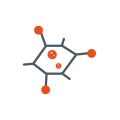Introduction to Bone Healing and Nutrition
Bone healing is a complex physiological process that plays a crucial role in restoring mobility and quality of life after fractures or orthopaedic surgery. In the United Kingdom, where an ageing population and lifestyle factors contribute to a significant incidence of bone injuries, understanding the foundations of bone repair is increasingly important for both patients and healthcare professionals. The recovery journey involves several stages: inflammation, bone production, and bone remodelling. Each phase requires optimal support from the body’s resources, which is where nutrition becomes highly significant. Adequate intake of specific nutrients can influence how efficiently bones heal, potentially shortening recovery time and improving outcomes. Within the context of British healthcare, where there is growing emphasis on preventative care and patient empowerment, dietary guidance tailored to the UK’s diverse population and available food sources is essential. By exploring the interplay between diet and bone healing, we can offer practical advice that aligns with NHS recommendations and resonates with British lifestyles.
2. Key Nutrients for Bone Repair
Effective bone healing relies on a well-balanced intake of essential nutrients. In the UK, traditional dietary habits offer a range of options to meet these needs, yet supplementation may sometimes be necessary. Understanding which nutrients are most vital, and how they can be sourced from everyday British foods, is crucial for optimising recovery following a fracture or bone surgery.
Calcium: The Building Block of Bones
Calcium plays a foundational role in bone structure and repair. It is abundant in many British dietary staples, making it accessible to most people. Common sources include:
| Food Source | Typical Serving Size | Approximate Calcium Content (mg) |
|---|---|---|
| Semi-skimmed milk | 200 ml glass | 240 mg |
| Mature cheddar cheese | 30 g slice | 220 mg |
| Sardines (with bones) | 100 g tin | 500 mg |
| Kale (boiled) | 100 g serving | 150 mg |
For those with lactose intolerance or vegan diets, fortified plant-based milks and leafy greens provide good alternatives. Supplements may be recommended if dietary intake is insufficient, especially for older adults.
Vitamin D: Aiding Calcium Absorption
Vitamin D helps the body absorb calcium efficiently. In the UK, sunlight exposure—particularly from late March to September—is a primary source. However, during autumn and winter months or for individuals who spend little time outdoors, obtaining enough vitamin D from diet and supplements becomes important. Key sources include:
- Oily fish such as salmon, mackerel, and sardines
- Egg yolks
- Fortified breakfast cereals and spreads
- Vitamin D supplements (often recommended by the NHS during winter)
Protein: Supporting Tissue Regeneration
Adequate protein intake is crucial for bone matrix formation and overall tissue repair. Traditional British diets generally provide sufficient protein through:
- Poultry, beef, lamb, and pork
- Dairy products like milk, cheese, and yoghurt
- Pulses such as lentils and beans (ideal for vegetarians and vegans)
- Nuts and seeds
Other Essential Nutrients for Bone Health
Apart from calcium, vitamin D, and protein, several other nutrients play supportive roles in bone healing:
| Nutrient | Main Function | British Dietary Sources |
|---|---|---|
| Vitamin K | Aids bone mineralisation | Brocooli, spinach, Brussels sprouts |
| Zinc | Tissue growth & repair | Pumpkin seeds, beef, shellfish |
| Magnesium | Bones’ structural development | Porridge oats, wholemeal bread, nuts |
| Vitamin C | Collagen synthesis for bone matrix | Citrus fruits, strawberries, peppers |
If you find it challenging to achieve recommended nutrient intakes through food alone—perhaps due to appetite changes post-injury or dietary restrictions—consulting your healthcare provider about appropriate supplements is advisable. Maintaining a balanced diet tailored to British eating habits can significantly enhance your body’s natural bone healing process.

3. Traditional British Diet and Bone Health
The traditional British diet, renowned for its hearty and comforting qualities, has a unique influence on bone health and the body’s ability to recover from fractures. Staples such as fish, dairy products, root vegetables, and whole grains feature prominently in classic British meals. These foods offer a variety of nutrients essential for bone repair, including calcium, vitamin D, protein, and magnesium.
Opportunities within the British Diet
British favourites like oily fish (salmon, mackerel), eggs, and fortified cereals are valuable sources of vitamin D—crucial for calcium absorption and bone mineralisation. Dairy products such as milk, cheese, and yoghurt are widely consumed and provide ample calcium and protein to support bone regeneration. Furthermore, dishes featuring leafy greens (like cabbage or kale) and legumes contribute additional micronutrients beneficial for skeletal recovery.
Challenges Posed by Traditional Eating Habits
Despite these opportunities, certain aspects of the British diet can present challenges for optimal bone healing. High consumption of processed foods, sugary snacks, and excessive salt in some traditional meals may hinder nutrient absorption or promote calcium loss. Additionally, the relatively low intake of fresh fruits and vegetables compared to recommended guidelines can result in insufficient vitamin C—an important nutrient for collagen synthesis during bone repair.
Cultural Considerations
The British fondness for tea is worth noting; while moderate tea drinking is generally safe, excessive consumption may interfere with iron absorption if not balanced with a varied diet. Moreover, cultural tendencies toward convenience foods can sometimes lead to a lack of dietary diversity essential for comprehensive bone health.
In summary, the traditional British diet offers both strengths and areas for improvement in supporting bone healing. With mindful choices that build upon its nutritious foundations while addressing modern dietary challenges, individuals in the UK can harness their culinary heritage to aid effective bone recovery.
4. Cultural and Lifestyle Considerations
The United Kingdom is renowned for its cultural diversity, which is reflected in a wide range of dietary practices and preferences. Understanding these cultural and lifestyle factors is essential when considering optimal nutrition for bone healing.
Influence of Dietary Patterns
In recent years, vegetarianism and veganism have become increasingly popular across Britain. These diets can offer health benefits but may require careful planning to ensure adequate intake of nutrients critical for bone repair, such as calcium, vitamin D, protein, and vitamin B12. While dairy products are a staple calcium source in traditional British diets, plant-based alternatives must be fortified or carefully selected to meet nutritional needs.
Common Dietary Sources for Bone Health
| Nutrient | Traditional British Sources | Vegetarian/Vegan Alternatives |
|---|---|---|
| Calcium | Milk, cheese, yoghurt | Fortified plant milks, tofu, leafy greens |
| Vitamin D | Oily fish, eggs, fortified cereals | Fortified plant milks, mushrooms, supplements |
| Protein | Poultry, beef, fish | Lentils, beans, tempeh, quinoa |
| Vitamin B12 | Dairy products, eggs | Fortified foods, supplements |
Lifestyle Factors Affecting Bone Healing Nutrition
Lifestyle choices also play a significant role in dietary habits that influence bone recovery. For instance:
- Physical Activity: Active lifestyles can increase the demand for nutrients involved in bone regeneration. Weight-bearing exercises are encouraged but should be balanced with appropriate nutrition.
- Smoking and Alcohol Consumption: Both are known to impede bone healing and reduce nutrient absorption. Reducing or eliminating these habits supports better outcomes.
- Sunlight Exposure: Given the UKs often limited sunshine, especially during winter months, vitamin D synthesis can be insufficient; thus supplementation may be necessary for many individuals.
- Cultural Food Preferences: Traditional British meals may differ from those enjoyed by various ethnic communities. Respecting these differences and adapting dietary recommendations accordingly ensures inclusivity and effectiveness.
Personalised Nutritional Advice
A collaborative approach involving dietitians familiar with diverse cultural backgrounds is vital. Tailoring guidance to respect ethical beliefs and personal preferences—while ensuring all essential nutrients for bone healing are covered—can enhance adherence and support optimal recovery for everyone in the UK’s multicultural society.
5. Practical Dietary Recommendations for Britons
When it comes to supporting bone healing, what you eat plays a crucial role in your recovery journey. For individuals in the UK, tailoring your diet with familiar foods and accessible resources can make this process both manageable and effective. Here are some actionable tips and guidance to help you optimise your nutrition during bone healing:
Focus on Calcium-Rich British Staples
Calcium is fundamental for bone repair. Fortunately, British diets naturally include several excellent sources. Dairy products such as semi-skimmed milk, mature cheddar cheese, and low-fat yoghurt are readily available and widely consumed. For those avoiding dairy, fortified plant-based alternatives (like soya or oat milk) and green leafy vegetables such as kale, broccoli, and spring greens offer suitable options.
Boost Vitamin D Intake
Vitamin D aids calcium absorption but is less abundant in everyday foods. Oily fish like mackerel, sardines, and salmon—often found in British supermarkets—are rich sources. Eggs and fortified breakfast cereals also contribute. Since sunlight exposure is limited in the UK, especially during winter months, consider discussing vitamin D supplements with your GP or consulting NHS advice on recommended dosages.
Emphasise Protein for Repair
Protein helps rebuild tissues after injury. Incorporate lean meats (such as chicken or turkey), fish, eggs, pulses (like lentils and chickpeas), and nuts into your meals. Classic British dishes like roast chicken with vegetables or lentil soups can be both comforting and nutritious.
Plan Balanced Meals
Meal planning ensures that you consistently meet your nutritional needs without added stress. Aim for three balanced meals per day featuring a variety of food groups: wholegrain carbohydrates (wholemeal bread or potatoes), protein sources, plenty of vegetables, and healthy fats from options like olive oil or avocados.
Utilise NHS Resources
The NHS provides extensive support for dietary planning and bone health recovery. Online tools such as the NHS Eatwell Guide can help structure meal plans tailored to individual needs. Additionally, local NHS dietitians are available to offer personalised advice if you have specific concerns or dietary restrictions.
By focusing on these practical steps—and making use of familiar British foods and trusted NHS guidance—you can give your bones the best chance at a strong and timely recovery.
6. Future Directions and Research in the UK
As our understanding of bone healing continues to evolve, the UK remains at the forefront of research and innovation in this field. Emerging trends highlight a growing emphasis on personalised nutrition, with British researchers exploring how individual dietary needs, genetic factors, and lifestyle habits impact recovery after fractures or orthopaedic surgeries. Collaborative efforts between universities, NHS trusts, and private sector partners are paving the way for evidence-based guidelines tailored specifically to the diverse UK population.
Recent studies within leading British institutions have begun to investigate the role of micronutrients beyond calcium and vitamin D—such as vitamin K2, magnesium, and omega-3 fatty acids—in accelerating bone regeneration and reducing complication rates. There is also increasing interest in how plant-based diets, which are gaining popularity across the UK, may affect bone density and healing outcomes compared to more traditional eating patterns.
On a practical level, NHS initiatives are focusing on integrating dietetic support into standard post-fracture care pathways. Trials are underway assessing whether early intervention with specialist nutritional advice can shorten hospital stays and improve long-term mobility for patients recovering from hip fractures—a common injury among older adults in Britain.
Looking ahead, digital health tools such as mobile apps and telehealth consultations are expected to play a greater role in delivering accessible dietary guidance for bone health. By leveraging technology, healthcare professionals can offer ongoing support and monitor patient progress remotely, ensuring that nutritional interventions remain effective throughout the recovery journey.
The future of dietary support for bone healing in the UK is undeniably promising. Continued investment in local research and cross-disciplinary collaboration will help refine best practices, ultimately empowering patients to take an active role in their recovery and promoting better bone health outcomes nationwide.


